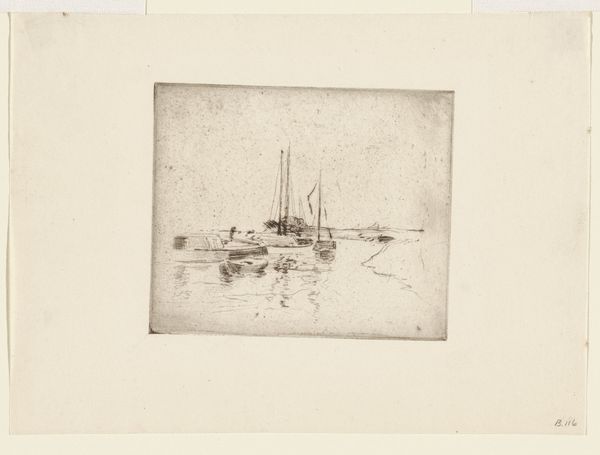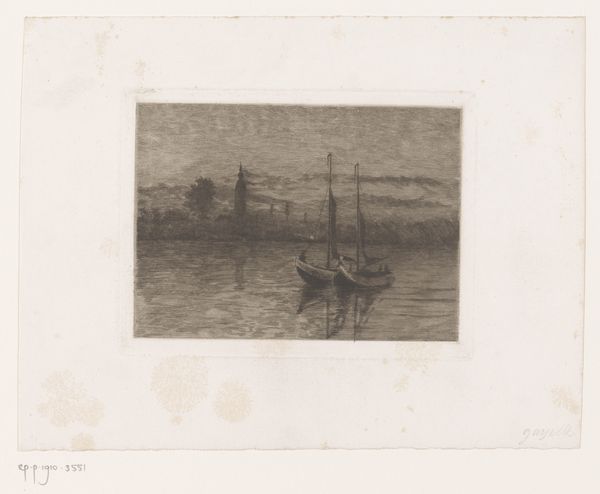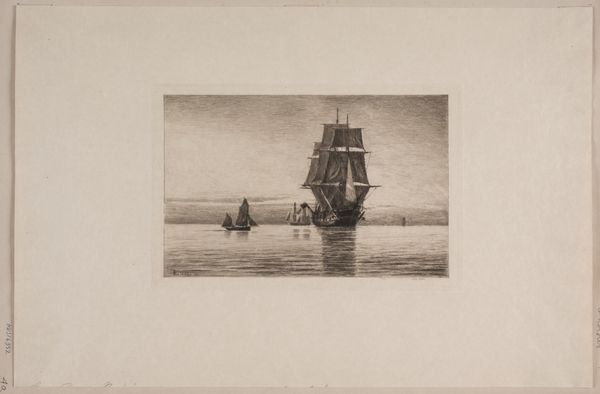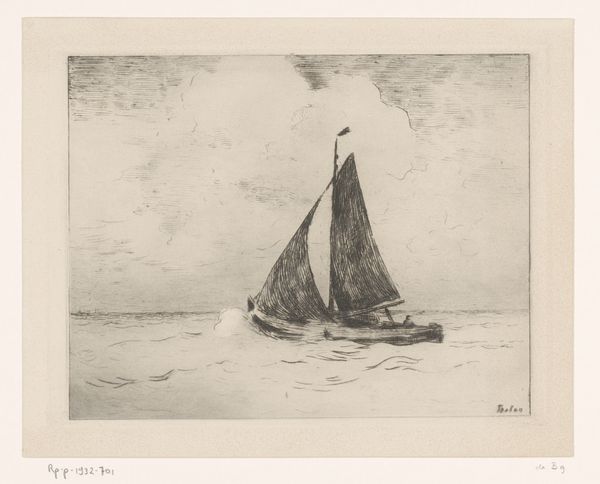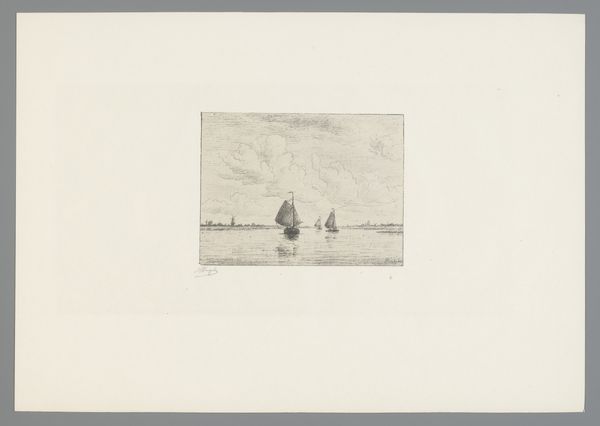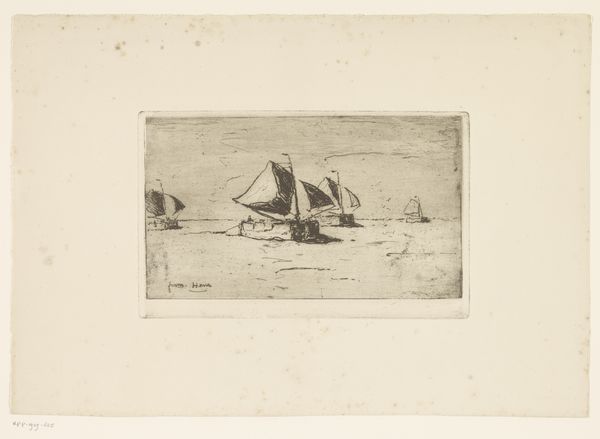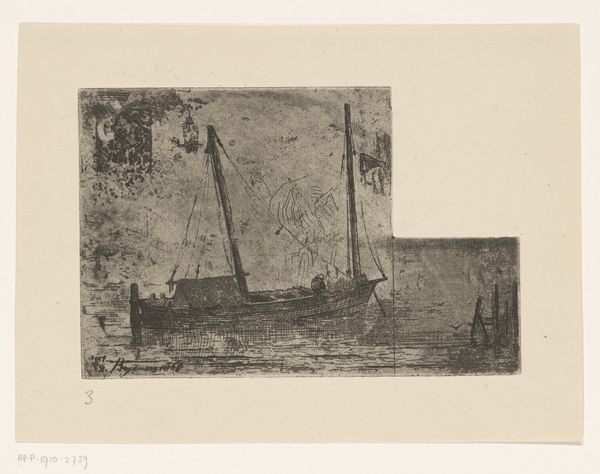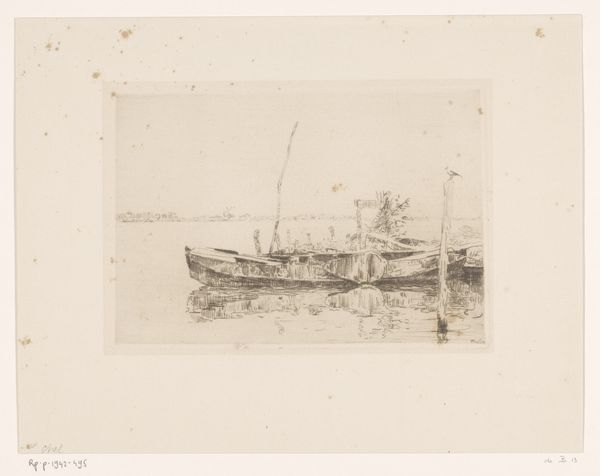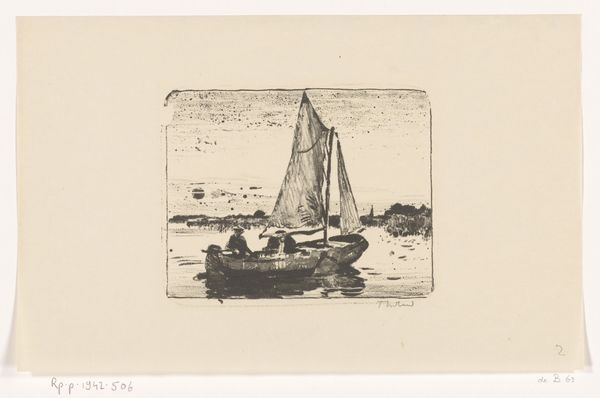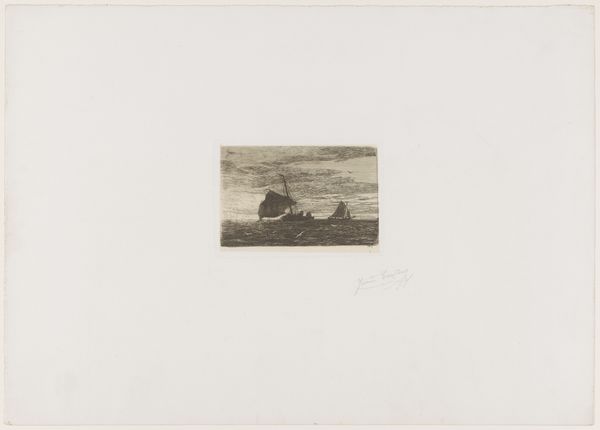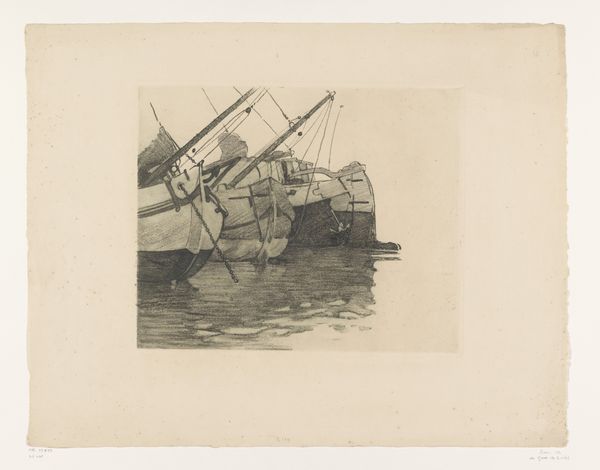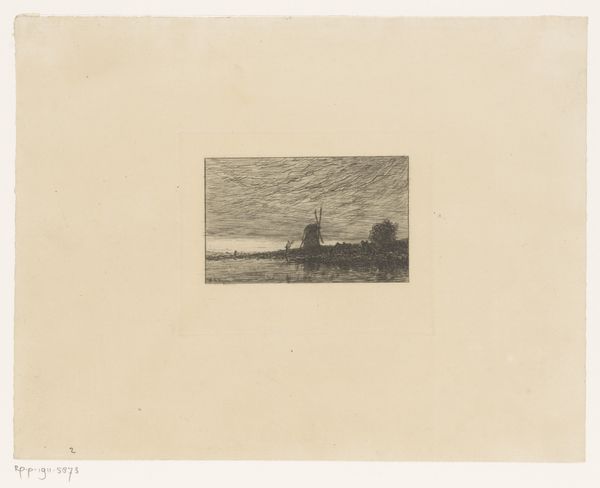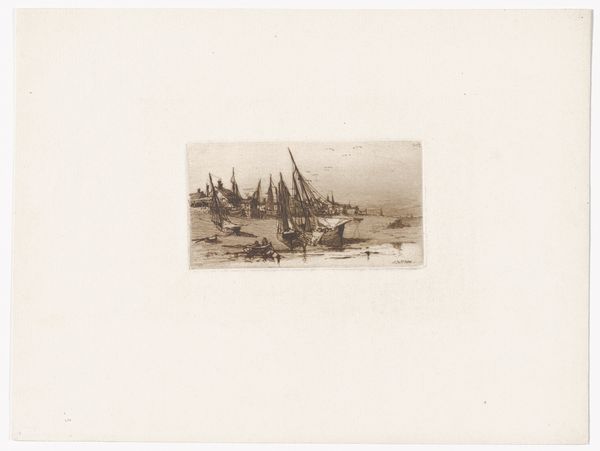
drawing, print, etching
#
drawing
# print
#
etching
#
landscape
#
geometric
#
line
Dimensions: height 119 mm, width 177 mm
Copyright: Rijks Museum: Open Domain
Curator: Upon first viewing, the tonal simplicity and fine linework create a contemplative mood, almost meditative. Editor: Indeed. This etching, "Zeilschepen op kalme zee," which translates to "Sailing Ships on a Calm Sea," from the period 1864 to 1902, shows an exploration of material limits—using etching to create a liminal image on paper. The print emphasizes the etching process itself; how labor and industry impact the creation and experience of art. Curator: Considering that time frame, what cultural and social narratives might these vessels represent, in light of evolving maritime trade or colonial expansion? Or are we meant to see this as more universal, transcending time to explore human interaction with the natural world? Editor: I would lean more toward a material assessment. The calm sea evokes stability and commerce. Yet, to me, the modest, linear approach diminishes the grand narratives. The artist—Paul Parmentier—carefully manages to work with etching lines that simulate labor without making them overt, perhaps hinting at maritime workers without ever explicitly depicting them. It challenges a singular vision. Curator: Fascinating. You're bringing labor into it through production. And speaking of singular visions, how might we situate Parmentier's representation of maritime activity within art historical depictions of the sea, particularly concerning Romantic or Realist approaches? What sociopolitical considerations influenced these varying perspectives? Editor: The repetitive use of etching would have likely been essential for distribution to lower economic sectors. By thinking this way, it's not just a romantic sea narrative, but speaks to industrial availability and accessibility in society. Curator: I appreciate your pointing toward these avenues. It truly opens the viewer’s eyes. Editor: Thanks. I believe the etching process and what this meant historically offers us essential insights for contextualizing labor.
Comments
No comments
Be the first to comment and join the conversation on the ultimate creative platform.
